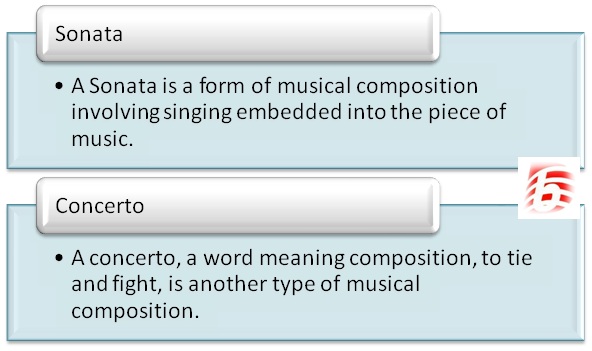Sonata vs Concerto
The difference between a sonata and a concerto is important to know for music enthusiasts. Music encompasses diverse styles, genres, and various types of musical compositions. Having a rich history dating back to ancient times, music is extensive and wide-ranging. A musical composition is a piece of musical work written specifically for particular arrangements of musical instruments. There are many types of musical compositions such as sonatas, concertos, orchestras, symphonies, cantatas, and string quartets. They are distinct from each other, yet they also have some similarities. This article aims to explore the difference between sonatas and concertos, two types of musical compositions or pieces.
What is a Sonata?
A sonata, a word originating from Latin meaning to sing, is a form of musical composition involving singing embedded into the piece of music. It is a kind of concert music that is played and sung on stage. Sonatas are distinguished by their structure and form, which have evolved through hundreds of years of history. The first appearance of sonatas was in the Baroque Period, though they took on more significant importance during the Classical Era of music. By the 20th and 21st centuries, the form of sonatas has changed from what it was in the Baroque days. The sonata in the late Baroque and classical periods consisted of a solo instrument, mostly a keyboard or some other solo instrument accompanied by a keyboard instrument. There have been sonatas composed for other instruments too. A sonata also consists of four movements; the first movement being a fast tempo and changing to the second movement which is a slow tempo. The third movement was usually a dance tune, and then the fourth movement was written in the home key of the musical piece.
What is a Concerto?
A concerto, a word meaning composition, to tie and fight, is another type of musical composition. Just like sonatas, the history of concertos dates back to the earliest musical period, the Baroque Period. A concerto is characterized by a solo instrument, usually a piano, violin, cello, or flute, accompanied by a group of other instruments. Concertos have also evolved over time, and their structure consists of three movements. The first movement is fast, the second is slow or quiet, and the third or last movement is again fast. The concerto in the Baroque period drastically differs from that of the 20th and 21st centuries.
What is the difference between Sonata and Concerto?
• Sonatas involve singing as well, while concertos are entirely musical.
• Although sonatas and concertos may appear similar to each other in the pace of their movements, the difference lies in that a concerto begins and ends in a fast tempo, while sonatas only begin in a fast tempo.
• Sonatas and concertos differ in their forms too. Sonatas have four movements, while concertos have only three.
• Sonatas are played by a solo instrument, usually a piano (keyboard) or one instrument accompanied by a piano. Concertos are played with one solo instrument that is accompanied by a small or large group of orchestra (group of instruments).
As such, sonatas and concertos differ from each other mainly in their forms. There are other differences too with regard to the music they play.
Key Takeaways
- Sonatas involve singing, while concertos are purely instrumental.
- Sonatas have four movements and are generally played by a solo instrument, whereas concertos have three movements and feature a solo instrument accompanied by an orchestra.
- Both sonatas and concertos have evolved over time, with their structures and forms changing from the Baroque period to the 20th and 21st centuries.
